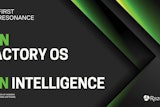In many cases, paper is the natural enemy of efficiency and a major “blind spot” for management and executives. When information and data is stored on voluminous quantities of paper, it cannot be shared, tracked, or acted upon efficiently.
This is part one of a two-part article. Part one can be found here.
When considering Paperless ERP, executives should ask themselves and their technology partners the following questions:
- What is the company’s current cost to process an invoice? How long does it take and what is the dollar value of the man-hours required?
- How often does the company miss out on discounts that could be claimed by paying invoices by their due date? Collecting these discounts actually can make the accounts payable department a revenue generator.
- How much time does AP spend answering supplier inquiries because of lost invoices or not being paid on time?
- Will automating AR improve cash flow as a result of implementing workflow procedures for order processing and customer service will the company get paid more promptly?
When considering the integration of a document-management solution with an ERP platform, executives should consider these questions:
- What processes should be automated? Which processes for this company’s operations will provide the greatest return if they are automated?
- What is the implementation time frame? How long will it take to set up a beta system to test new processes?
- How will the implementation be coordinated with the banks? The ERP system the company selects should have a module compatible with that of the company’s bank so that custom programming can be avoided.
- How well does the ERP system integrate with the company’s point-of-sale and/or line-of-business systems?
- How well does the system handle currency when purchases are made from foreign suppliers?
- Have project managers obtained executive buy-in to change the processes?
- How extensive will the technology vendor’s training and implementation support be? The vendor should offer different layers of training for AP staff, order-entry staff and others as individual groups, rather than training one IT person and expecting that individual to train the others.
Best Practices
Manufacturers can use an integrated document management/ERP solution most effectively by adopting the following best practices:
- Encourage vendors to move away from paper and toward an electronic format by creating purchasing documents in a digital form from the start. Electronic invoices can be saved in PDF format so that they can’t be altered and then emailed to the company.
- Review the company’s processes to ensure that they are truly efficient. Automating a bad process simply makes a bad process faster.
- Centralize accounts payable processes. If possible, all vendors should send their invoices electronically to a central office so that individual branches don’t need to manage the documents. However, if invoices must be received at remote locations, they should be simply scanned and emailed from the remote locations and captured electronically at the central location thus eliminating all paper shipping costs.
- Standardize the company’s review and approval process so that everyone can follow the same procedures and new employees will have workable guidelines. Electronic, web-based workflows assures that controls are efficiently put into place.
- Automate what can be automated and streamline the rest. Where purchasing or receiving does not have strict rules on a process, such as three-way matching, automating may be difficult and the process should instead be simplified and standardized to the extent possible. Paperless technology can also significantly reduce the burden of those exceptions and complex processes that cannot be fully automated.
- Don’t try to make the initial implementation too large. Consider streamlining certain processes in
phase 1, automating in phase 2, and streamlining and automating another area in phase 3. Make sure the technology you choose is cost effective to implement in phase one, yet has the strength and capability to expand corporate wide as you gain acceptance and prove ROI. - Get executive leadership involved and show them how they can easily gain visibility and business intelligence with the solution.
- Plan to expand the Paperless ERP solution to other parts of the organization that currently maintain paper-based processes. This will help the cost justification process to more easily gain management approval and will maximize the company’s investment in a state-of-the-art document management system.
By tossing out paper-based processes and automating a digital workflow, manufacturers can improve payment accuracy and productivity while substantially cutting costs.


















